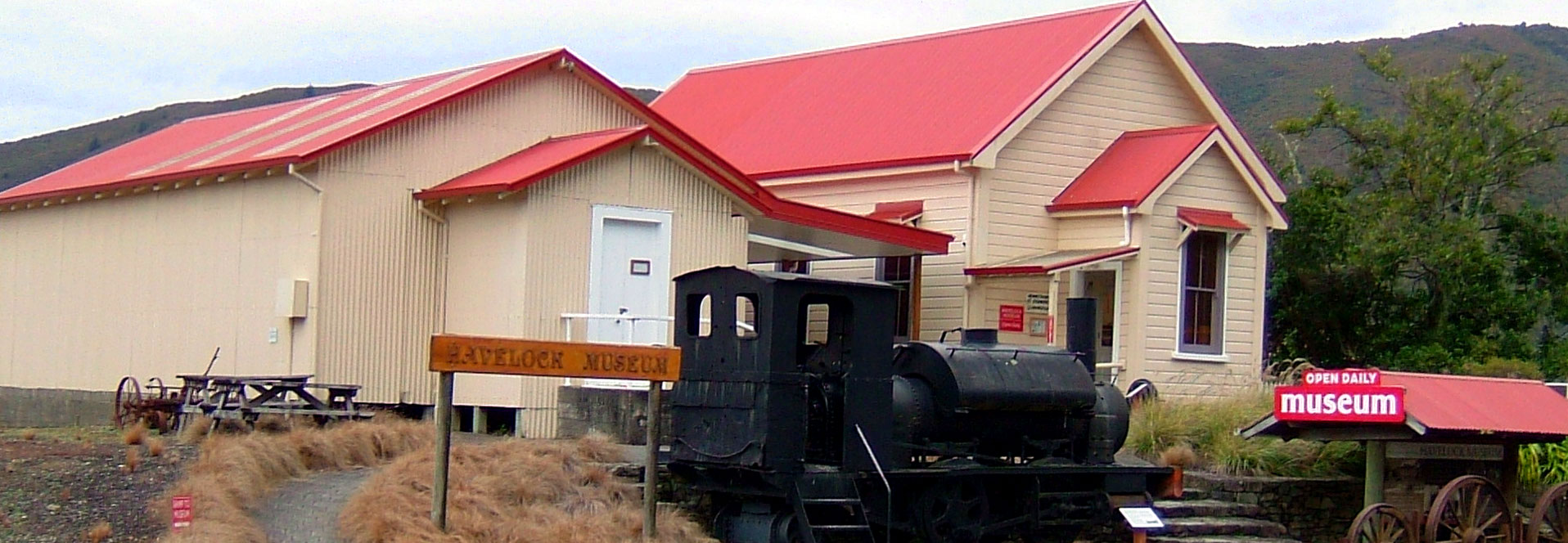In the winter of 1992 the Havelock Suburban Hall was donated to the Museum by Mr. Jack Shand to be used as a support building. The Hall was built at a cost of £100-10-01 by Neil Wratt and assisted by Doug Coward and the local settlers who gave voluntary labour. It was opened on 6th December 1938.
The flooring used was Matai at a cost of 25 shillings per 100 feet.
The Hall was the focal point of the Havelock Suburban Valley and was used for farmer’s meetings, church services, dances, social gatherings and birthday celebrations.
During World War 2 the Hall was used for fundraising and the ‘send off’ and ‘welcome home’ for the Havelock Suburban servicemen.
From when it was first opened the Country Women’s Institute held their monthly meetings there.
The existing Musem was not large enough to allow displays on social history so we embarked on the project of extending our displays into the adjacent building (the community hall shifted from Havelock Suburban). However, this hall was not suitable for the housing of Museum artifacts and needed a good deal of refurbishment before it could be used for such a purpose.
The Havelock Museum has celebrated the opening of its newly refurbished Jack Shand Building.
After many years of planning, hard work and a number of fundraising efforts, the building has been renovated with a new ceiling and walls with insulation throughout, a new porch overhang at the entrance and an enlarged workroom.
Thanks to support from funders and the contribution of history and photographs from local iwi, it has been transformed into a space housing exhibitions focused on the Māori and social history of Te Hoiere and the Sounds.
Funding came through a variety of sources including Council, Lotteries, Rata Foundation Te Awhera Nui Trust, Blue Door, Port Marlborough, Havelock Four Square, Havelock and Seafood Mussel Festival, and One Forty One but locals dug in too. A regular fleamarket was held in the building which locals donated to and bought from.
“Local people and businesses also helped with fundraising applications with letters of support and the Havelock Museum committee was fantastic making behind-the-scenes decisions,” she said. There were many people involved who helped make the new building a reality mainly museum designer Sally Papps, who did the opening exhibition almost entirely on her own.
“Ruihana Smith and Peter Meihana contributed with Māori artifacts, photographs and the history of their journeys into the Sounds and rivers,” Mrs Jacobson said.
The opening ceremony included speeches, notably from Jack’s son Martin who told of Jack’s involvement with the museum over the years.
There was also a kapa haka performance by the Havelock School kapa haka group
The Jack Shand Building is open every day from 10am - 4pm as is the Museum.



